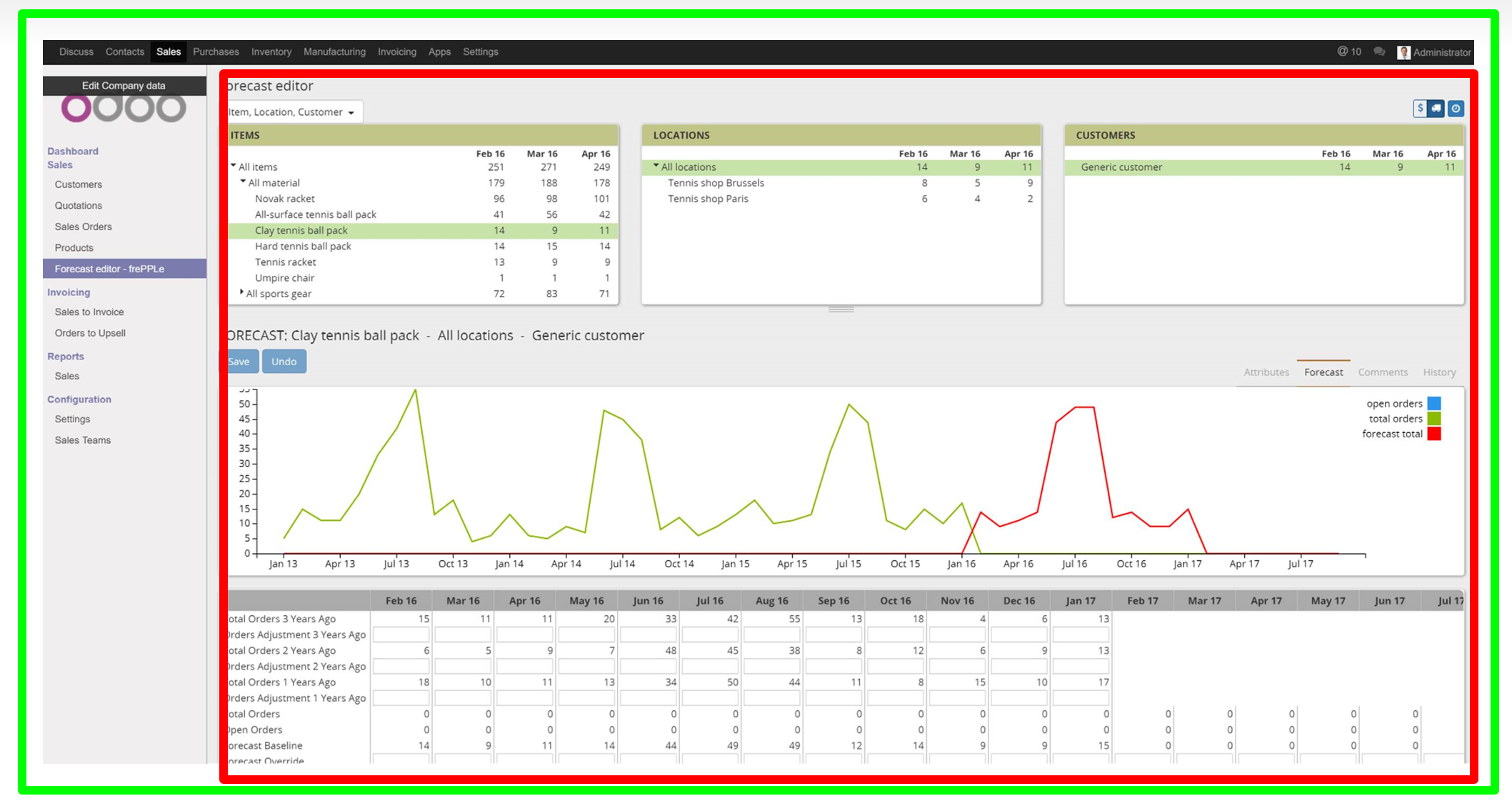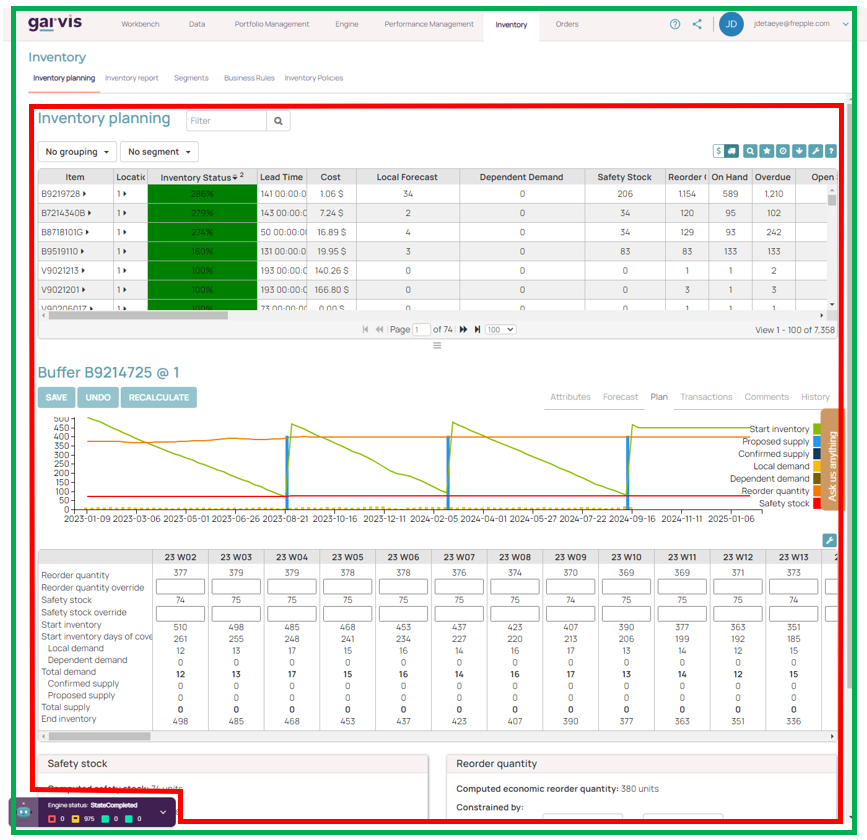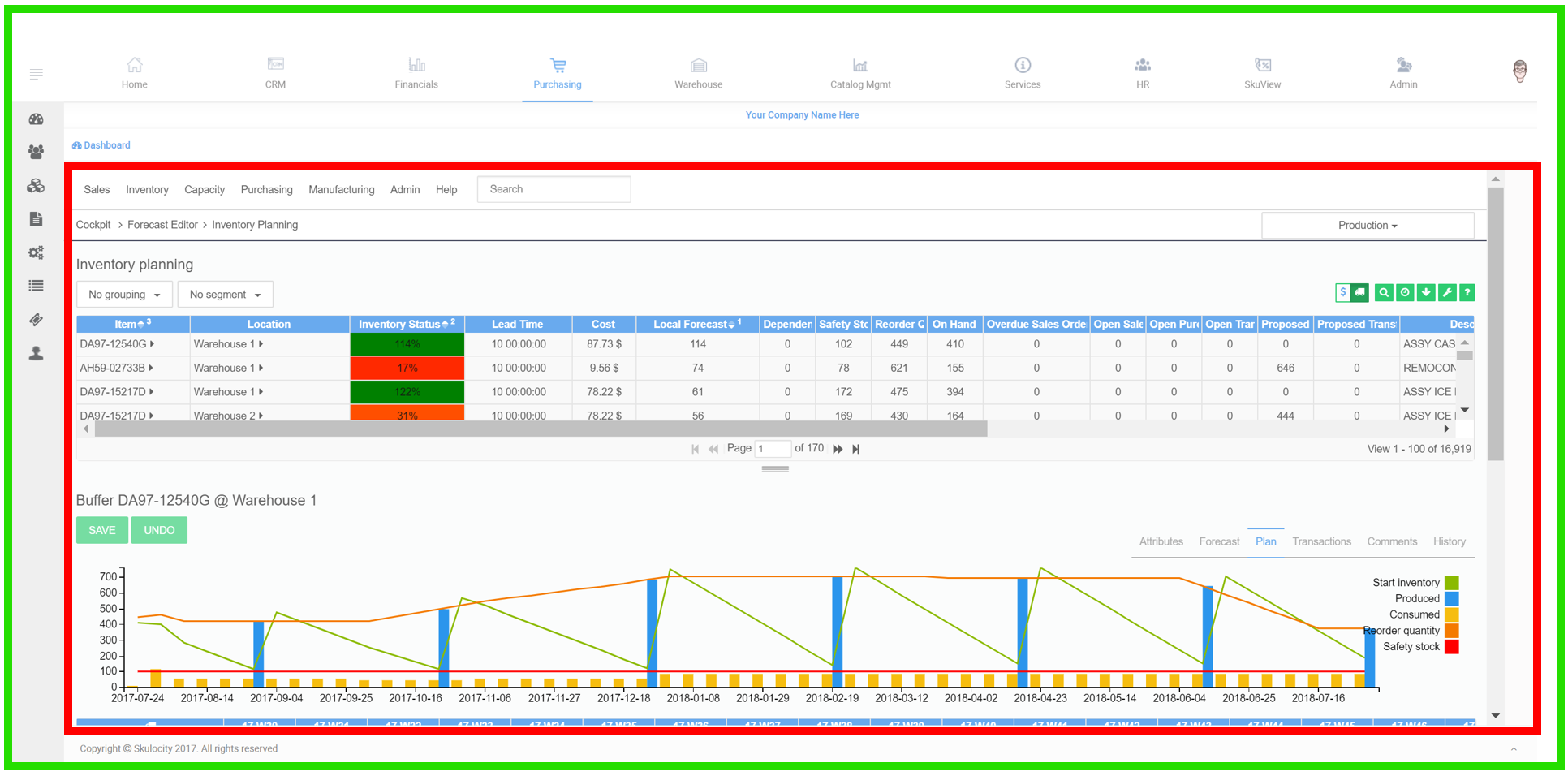Embedding in other applications
FrePPLe has an open and flexible architecture that allows embedding all planning capabilities and user interface screens in your third party applications.



The remainder of this page contains more information on the technologies and tasks involved for developing this type of embedding:
- To start with, you need to be aware of the MIT license compliance.The Community Edition of frepple requires a copy of the terms of the MIT License and also a copyright notice to be included with all copies of the software or its substantial portions.The Enterprise Edition can be embedded also in applications with a different license - contact us for details.
- Frepple’s web pages are displayed in an iframe of another web application.The settings CONTENT_SECURITY_POLICY and X_FRAME_OPTIONS need to be set correctly. This avoids browsers from blocking the content that violates the CORS security policies.
- To provide a seamless user experience you can display frepple with a theme that mimics the look and feel of the frePPLe user interface.
- Frepple can be configured to hide or display the navigation bar.When the frepple navigation bar is hidden, your application will need to include the relevant frepple screens in its menus and navigation.
- Ability to authenticate user with a web token (see https://jwt.io/introduction/) issued by another web application.Users only need to log in once. The user authentication is handled your web application, which forwards the credentials to frePPLe in a securely encrypted token.
The external application needs to generate a webtoken, following the see JWT JSON Web Token specification: https://jwt.io/introduction/
The web token specifies:
The user that is authenticated. The user must be defined in frePPLe and his/her role and permissions within frePPLe need to be defined: See below.
- The expiration time until which the token is valid, expressed as seconds since Jan 1st 1970 GMT. The site https://www.epochconverter.com/ provides a convenient check on these values.A token should normally be valid 1 to 2 hours after its generation.
The navbar argument specifies whether frePPLe should render its navigation header or not. In most case you’ll want to hide it.
Below is an example code snippet using the Python PyJWT library (see http://pyjwt.readthedocs.io/en/latest/). https://jwt.io/#libraries contains links to implementations of the JWT specification in many other programming languages.
import jwt import time webtoken = jwt.encode( { 'exp': round(time.time()) + 600, # Validity of the token 'user': USERNAME, # User name 'navbar': False # Whether or not frePPLe should render # its navigation bar or not }, 'MY_SECRETKEY', # The shared secret between frePPLe and your application algorithm='HS256' ).decode('ascii')
- The external application needs to use an iframe to display frePPLe’s content.Note how the web token is added as a URL argument to the frePPLe web browser. (As a future enhancement we might also allow putting the token in a HTPP header.)If your application is running under HTTPS, frePPLe will also need to be configured to use HTTPS. Otherwise browsers will refuse to display frePPLe’s unencrypted data on the page.
<iframe src="https://FREPPLE_URL/?webtoken=WEBTOKEN" width="100%" height="100%" marginwidth="0" marginheight="0" frameborder="no" scrolling="yes" />
- On frePPLe’s side the shared secret needs to be configured in the file djangosettings.py.By default it is set to the secret key of the frePPLe application. It is more secure to generate a separate secret key for the web token authentication without sharing frePPLe’s own internal secret key.
... DATABASES = { 'default': { ... SECRET_WEBTOKEN_KEY: 'MY_SECRETKEY', ... } } ...
Each user accessing frePPLe will still need to be defined in frePPLe and his/her role and permissions will need to be defined. See details: User permissions and roles
- Task execution can be done through a web API, such that your application can control and monitor the execution of the jobs.See Remote commands
